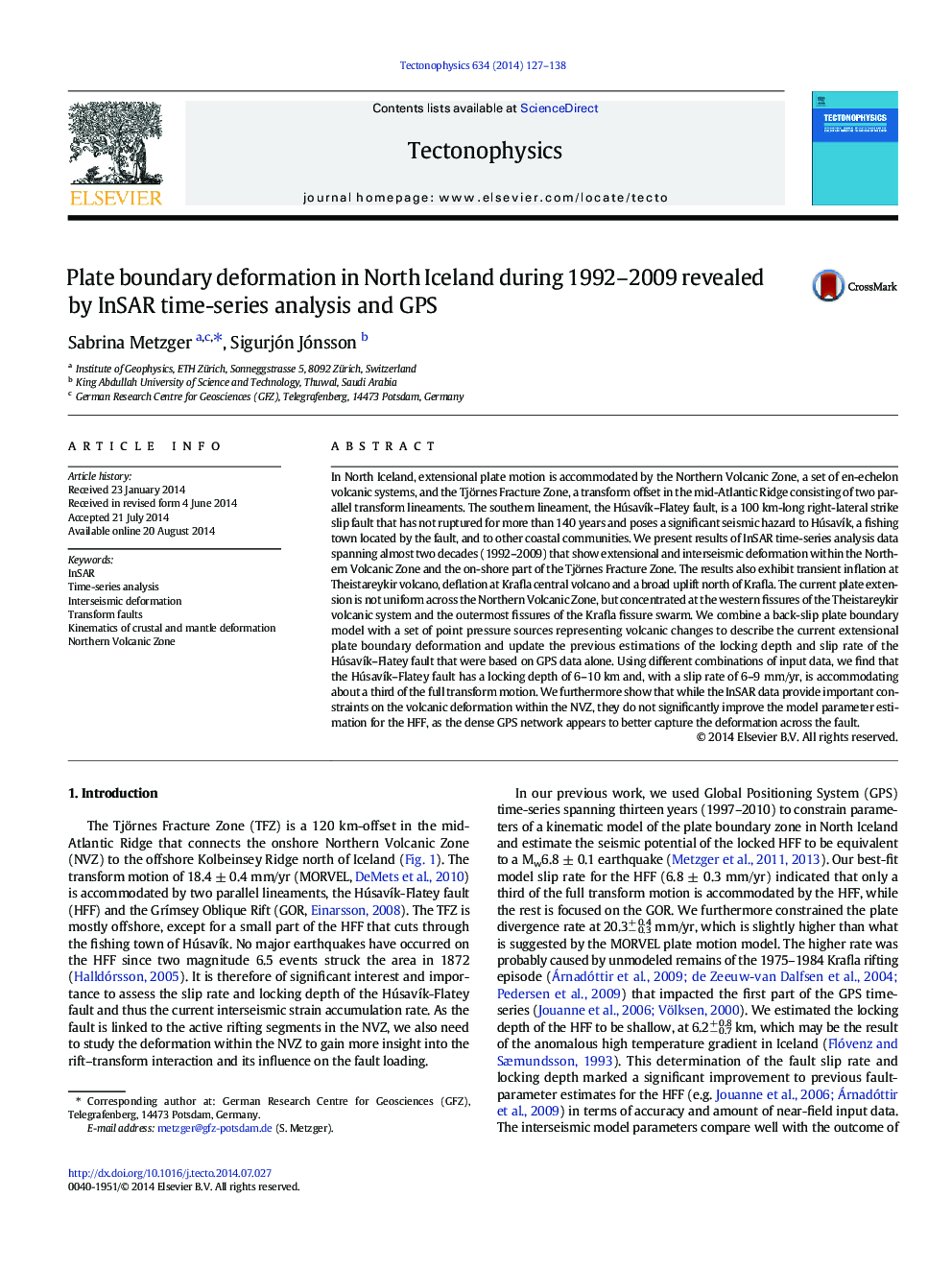| کد مقاله | کد نشریه | سال انتشار | مقاله انگلیسی | نسخه تمام متن |
|---|---|---|---|---|
| 4691823 | 1636757 | 2014 | 12 صفحه PDF | دانلود رایگان |

• We present the results of time-series analysis of 17 years of InSAR data.
• We identify interseismic plate-boundary motion and transient volcanic signals.
• We apply an interseismic plate-boundary model to estimate key kinematic parameters.
• The highest strain-rates are found in the Krafla and Theistareykir volcanic systems.
• The Husavik Flatey fault accommodates one third of the full plate transform motion.
In North Iceland, extensional plate motion is accommodated by the Northern Volcanic Zone, a set of en-echelon volcanic systems, and the Tjörnes Fracture Zone, a transform offset in the mid-Atlantic Ridge consisting of two parallel transform lineaments. The southern lineament, the Húsavík–Flatey fault, is a 100 km-long right-lateral strike slip fault that has not ruptured for more than 140 years and poses a significant seismic hazard to Húsavík, a fishing town located by the fault, and to other coastal communities. We present results of InSAR time-series analysis data spanning almost two decades (1992–2009) that show extensional and interseismic deformation within the Northern Volcanic Zone and the on-shore part of the Tjörnes Fracture Zone. The results also exhibit transient inflation at Theistareykir volcano, deflation at Krafla central volcano and a broad uplift north of Krafla. The current plate extension is not uniform across the Northern Volcanic Zone, but concentrated at the western fissures of the Theistareykir volcanic system and the outermost fissures of the Krafla fissure swarm. We combine a back-slip plate boundary model with a set of point pressure sources representing volcanic changes to describe the current extensional plate boundary deformation and update the previous estimations of the locking depth and slip rate of the Húsavík–Flatey fault that were based on GPS data alone. Using different combinations of input data, we find that the Húsavík–Flatey fault has a locking depth of 6–10 km and, with a slip rate of 6–9 mm/yr, is accommodating about a third of the full transform motion. We furthermore show that while the InSAR data provide important constraints on the volcanic deformation within the NVZ, they do not significantly improve the model parameter estimation for the HFF, as the dense GPS network appears to better capture the deformation across the fault.
Journal: Tectonophysics - Volume 634, 5 November 2014, Pages 127–138